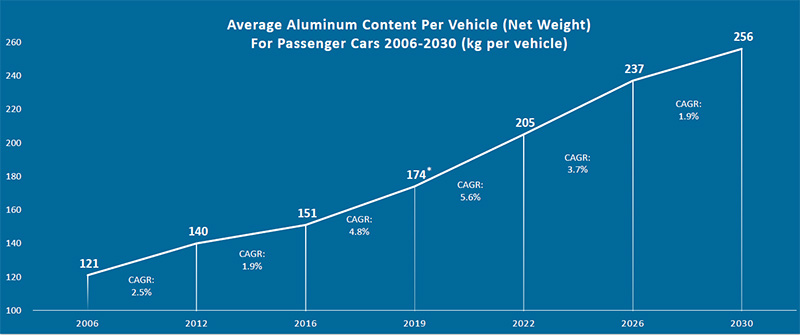China's Automotive Landscape: A Shifting Terrain For Luxury Brands Like BMW And Porsche

Table of Contents
The Rise of Domestic Chinese Automakers
The rise of domestic Chinese automakers is arguably the most significant disruption to China's automotive market. Brands like BYD, Nio, and Xpeng are no longer niche players; they're formidable competitors, aggressively challenging established luxury brands.
Increased Competition
The increased competition stems from several factors:
- Successful Chinese EV Models: BYD's Han and Tang EVs, Nio's ET7, and Xpeng's P7 are just a few examples of domestically produced electric vehicles that have achieved significant market penetration, directly competing with and even surpassing the sales of some luxury imports in certain segments. These vehicles often boast impressive technology and features at competitive price points.
- Price Competitiveness: Domestic brands are increasingly price-competitive, offering comparable features and technology at lower price points than many imported luxury vehicles. This aggressive pricing strategy is attracting price-sensitive consumers, including those who may have previously considered luxury brands.
- Impact on Luxury Brand Sales: The market share of luxury brands like BMW and Porsche in China's automotive market is feeling the pressure. Sales growth is slowing in some segments as consumers opt for domestically produced alternatives offering similar technology and prestige at a more affordable price.
Targeting the Younger Generation
Domestic brands are effectively targeting the younger generation of Chinese consumers, a demographic crucial for long-term growth in China's automotive market.
- Social Media Marketing: Chinese automakers leverage social media platforms like WeChat and Weibo extensively, creating engaging content and building strong online communities. This contrasts with the often more traditional marketing approaches of some established luxury brands.
- Cultural Alignment: Domestic brands successfully align their brand storytelling and marketing messages with the values and aspirations of younger Chinese consumers, fostering a sense of connection and national pride. This resonates particularly strongly with a generation increasingly proud of China's technological advancements.
- Impact on Luxury Brand Marketing: Luxury brands must adapt their marketing strategies to resonate with this younger demographic, potentially embracing digital channels more aggressively and tailoring their messages to reflect Chinese cultural nuances.
Evolving Consumer Preferences in China
Consumer preferences in China's automotive market are rapidly evolving, driven by technological advancements and a growing awareness of environmental concerns.
Shift towards Electric Vehicles (EVs)
The growth of the EV market in China is phenomenal. Government support and consumer demand are fueling this transition, presenting both opportunities and challenges for luxury brands.
- Government Incentives: Substantial government subsidies and preferential policies are driving EV adoption, making electric vehicles more attractive to consumers.
- Luxury Brand EV Offerings: Luxury brands are responding with their own EV offerings, but they face competition from domestically produced EVs that often offer similar technology at lower prices.
- Charging Infrastructure Challenges: While improving, the charging infrastructure in China still presents challenges, including range anxiety and uneven distribution across regions. This is an area where domestic brands are sometimes ahead, leveraging their better understanding of local infrastructure needs.
Demand for Technology and Connectivity
Chinese consumers are increasingly tech-savvy, placing a high value on advanced features and seamless connectivity.
- Sought-After Technologies: Features like advanced driver-assistance systems (ADAS), sophisticated infotainment systems, and over-the-air software updates are highly sought after.
- Luxury Brand Response: Luxury brands are investing heavily in developing and integrating these technologies into their vehicles, recognizing their importance in influencing purchasing decisions.
- Digital Integration: The importance of providing a fully digitalized and personalized experience, extending beyond the vehicle itself to encompass the entire customer journey, is paramount in China's automotive market.
Navigating Government Regulations and Policies
Government regulations and policies significantly impact the operations and strategies of luxury brands in China's automotive market.
Emission Standards and Environmental Regulations
China is implementing increasingly stringent emission standards, pushing automakers towards electrification and sustainable manufacturing practices.
- Shift to Electrification: Meeting these standards requires significant investment in electric vehicle technology and related infrastructure.
- Impact on Pricing and Production: Compliance with these regulations can increase production costs and subsequently, vehicle pricing.
- Sustainable Manufacturing: Adopting sustainable manufacturing practices is not just a regulatory requirement but increasingly a consumer expectation.
Import Tariffs and Trade Policies
Import tariffs and trade policies influence the pricing and competitiveness of imported luxury vehicles.
- Impact on Profitability: Import tariffs directly impact the profitability of imported vehicles, making them less competitive compared to domestically produced alternatives.
- Mitigation Strategies: Luxury brands are exploring strategies to mitigate these impacts, including local production and partnerships with Chinese manufacturers.
- Localization and Local Production: Establishing local production facilities in China can help reduce import costs and improve competitiveness.
Conclusion
China's automotive market presents a complex and dynamic environment for luxury brands like BMW and Porsche. The rise of domestic competitors, evolving consumer preferences, and government regulations necessitate strategic adaptation. Successfully navigating this "shifting terrain" requires a deep understanding of the local market, a commitment to innovation in electric vehicles and technology, and a willingness to tailor strategies to the unique demands of Chinese consumers. By effectively addressing these challenges, luxury brands can capitalize on the immense potential of China's automotive market and maintain their leadership positions. Understanding and mastering the nuances of China's automotive market is crucial for the continued success of luxury brands. To stay ahead, continuous monitoring and adaptation to the ever-changing landscape of China's automotive market is vital.

Featured Posts
-
 Malta Matchen En Utmanande Start Foer Jacob Friis
May 20, 2025
Malta Matchen En Utmanande Start Foer Jacob Friis
May 20, 2025 -
 Ai Coding Agent Integrated Into Chat Gpt Improved Efficiency And Productivity For Developers
May 20, 2025
Ai Coding Agent Integrated Into Chat Gpt Improved Efficiency And Productivity For Developers
May 20, 2025 -
 D Wave Quantum Inc Qbts Stock Plunge In 2025 Reasons And Analysis
May 20, 2025
D Wave Quantum Inc Qbts Stock Plunge In 2025 Reasons And Analysis
May 20, 2025 -
 Big Bear Ai Stock Current Market Outlook And Investment Potential
May 20, 2025
Big Bear Ai Stock Current Market Outlook And Investment Potential
May 20, 2025 -
 Le Mercato Des Restaurants A Biarritz Nouvelles Tables Et Chefs Talentueux
May 20, 2025
Le Mercato Des Restaurants A Biarritz Nouvelles Tables Et Chefs Talentueux
May 20, 2025
